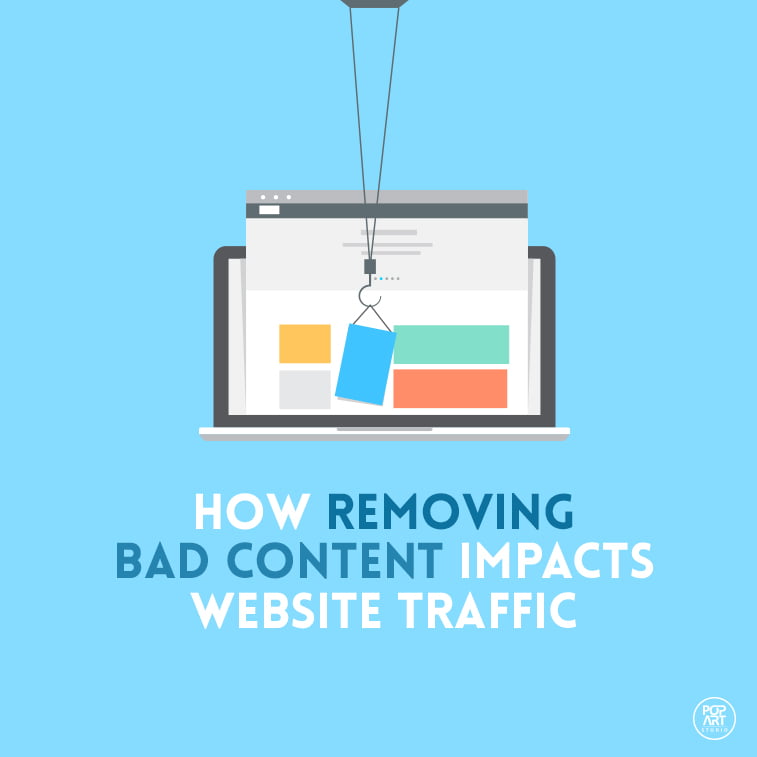One of the hottest topics in SEO today is Google's algorithm change and how it will affect search engine rankings. Due to this question, many SEOs are wondering whether or not content quality can affect their search traffic.
Some of them, like Dan Petrovic, experiment with this theory while others try to research to find the proof on either side. Here are the pros & cons of bad content removal in order to improve website traffic.
What is ‘(poor) Quality Content’?
Before we start listing the pros & cons, we need to see what poor quality content is.
Let’s start from Google. After all, if you are ranking on this search engine, you should know their rules. As a matter of fact, they published a Guide on building high-quality sites – do check it out.
Other SEO experts have their say based on their experience. In her article about evaluating content quality, Isla McKetta of Moz, defines content as:
“the sum of all of the words, images, videos, and audio on your site, social pages, emails, and beyond. A good content creator is thinking about everything from the language on your newsletter subscription text to the tone in your order confirmation email or even the wording on your delivery envelopes.”
In The Ultimate Google Algorithm Cheat Sheet, Neil Patel recommends the following:
“Therefore, if you’re always updating your blog or site with relevant, well-researched, and in-depth (2000+ words) content, you should expect improved rankings and organic visitors from Google. By the same token, sites that publish irregularly or sporadically will find it hard to retain a solid position in Google.”
The aforementioned Mr. Petrovic defines quality content as “current, relevant, useful, non-thin, non-obsolete, low bounce.”
Therefore, we can conclude that poor quality content would be everything opposite of the aforementioned: stale, irrelevant, useless, thin, obsolete, and with high bounce rates.
Back in October, we tried to define what viral quality content is; nevertheless since this is a very complex question, it would be better if you read the entire article: How to improve the quality of your content and make it go insanely viral?
How to know when old (poor) content has a negative impact on my search traffic?
When you notice a decline in traffic, such as this one:

…you should know you have been hit by Panda.
Google’s algorithm responsible for content supervision – Panda – is now a part of the main algorithm (we are still not sure when that happened, but on January 11, 2016, Jennifer Slegg, an SEM expert, posted a comprehensive guide on Google Panda). However, the main algorithm is still alive and can be rolled out whenever. Of course, we will let you know when this happens.

Now we can list the pros & cons of bad/poor quality content from your site:
Removal Pros:
– Removing poor quality pages came straight from the horse’s mouth, i.e. Google recommends its removal. Namely, low-quality content on one part of a site can cause the decline of the entire site’s ranking! So, instead of falling behind because of a small percentage of poor quality, you can remove it and solve the problem!
– Your content will be fresh and up to date
– Your content will be more searchable
– Your users will find you more quickly
– You will be better ranked
Removal Cons:
– You will lose inbound links
– You will lose social media signals
– Your long SEO efforts will be lost
– You will lose lead opportunities
– You will lose your site history (this one is sentimental, we know)
What to do?
Here is an example.
Dan Petrovic, the founder of Dejan SEO, wrote an article which describes why nobody reads your articles – because we are too impatient to read 4000 words when we can skim read and focus on only 400 words – like in his articles.
Due to this, on February 9th, Petrovic deleted 628 low quality blog posts just to see what happens:
I have just deleted 628 posts from my blog which haven’t met the minimum of quality standard and usefulness. Let’s see what happens.
— DEJAN (@dejanseo) February 8, 2016
Now, the fact that the biggest Aussie SEO company did this experiment does not mean that your local one will benefit from this as well. They are a famous and renowned company that already has its audience, and they probably can take a leap of faith and, literally, see what happens.
On the other hand, sometimes, it would be best to leave things as they are, or:
- Redirect (301s)
- Rewrite (hire a copywriter to improve the content)
- Recycle (create new pages by using old, yet improved topics)
If the content has zero traffic and basically no links (irrelevant included), you should definitely delete it.
Read more:
- A beginner’s guide to Google Analytics
- What is the length of an effective SEO campaign?
- Basic SEO for web designers: How to boost user satisfaction
- Leave Google alone: Possible causes of search traffic decline





